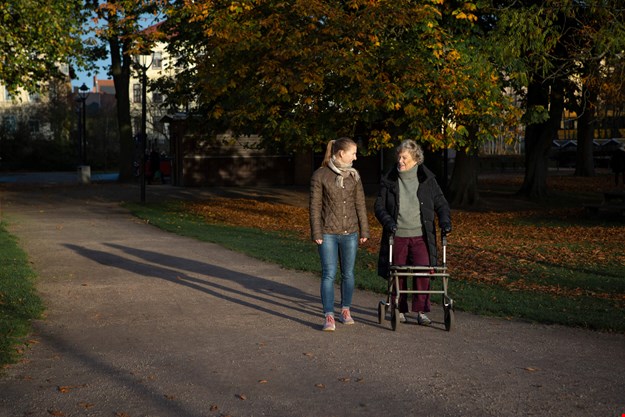-
Country
-
Search
While the pandemic has affected all of us, few have been hit harder than the elderly. As a risk group, they have had to bear the brunt through months of isolation. But for many elderly the situation isn’t new; 600,000 elderly Swedes feel lonely even when there are no restrictions. It’s time to take action against loneliness, writes Carl-Johan Zetterberg Boudrie, CEO of the technology enabled care company Careium.
Swedes are living longer and longer, and we should be grateful to medical researchers for that development. It means we get to share more special moments with our parents, and grandchildren get to learn from their grandparents. A great grandmother can now build that six-piece puzzle with worn, colourful figures with the help of a child’s hands.
But an aging population leads to new challenges. One of the biggest is loneliness. Every third person over the age of 65 lives alone. The older people get, the more their social network shrinks. They lose their colleagues. Friends get older. Reduced mobility makes it harder to meet people. A survey by Statistics Sweden shows that one third of those aged 85+ feels lonely. From age 65 and up, about 300,000 people say they feel lonely. That’s far too many, and it’s a problem we as a society must address.

This was already a problem before the pandemic paralyzed society and is even more pressing today. Everyone must do their bit to help solve it. Those of us who have living parents or are grandchildren have a great responsibility. We can never legislate or invent our way around that. But we need to become better at using the technical aids that are available to reduce the loneliness and vulnerability that far too many people experience. As a company we’re doing our bit by developing those aids, but society needs a plan for how to make them benefit the elderly.
Two major factors that increase loneliness are a lack of social contacts and limited opportunities to get out. Luckily, there are solutions to mitigate those factors.
One technological breakthrough that could make a big difference is the safety camera. Today, many elderly are physically supervised at night by caregivers to ensure they’re lying safely in bed. Those visits are often problematic as they disrupt the person’s sleep, and many feel uncomfortable about someone entering their bedroom without their knowledge. Additionally, such visits are resource-intensive and require a lot of staff. By installing a safety camera, the supervision can be done remotely. The camera can be controlled by caregivers from a remote location and isn’t active or pointed at the bed except when the supervision takes place. Should something happen, a caregiver is still despatched to the person’s home.
By streamlining nightly supervision, the home care service could free up resources to make more daily home visits when the care recipient is awake and the visits also fill a social need. But for that to happen politicians must not see the safety camera as a cost-saving measure but as a way to free up resources to reduce loneliness.
Another area where technology can play an important role is in outdoor safety. Isolation in the home is often the biggest source of loneliness. The fear of falling or getting lost means many elderly to opt out of the short walk to the local store or a gentle stroll. There are well-developed technologies with GPS positioning and mobile safety alarms that can provide the security to venture out. Fresh air and short walks are not only good for counteracting loneliness but also for improving the well-being of the elderly. These aids should be offered to more people, not just those who receive support from their municipal government or from active relatives who have purchased the products privately. Municipal governments should act as mediators and make it easier for the elderly to use technology.
While we may not be able to eradicate loneliness, we all have an obligation to do what we can.
Carl-Johan Zetterberg Boudrie, CEO, Careium